Orthodontic Treatments
Where smiles are beautifully aligned

Orthodontic Treatments
Where smiles are beautifully aligned
Well-aligned smiles don’t just look great—they support your health and comfort! Children, teens, and adults alike can holistic benefit from Alma Dental Surgery’s personalised, holistic approach to orthodontic orthodontic care. Straighten crowded teeth, correct bite concerns, or simply bring your smile into better balance with our professional guidance, personalised treatment and modern techniques. We provide complete care for every step of your smile alignment journey.
Orthodontics
Orthodontics goes beyond simply straightening teeth—it’s about creating a smile that works well, feels comfortable, and supports long-term oral health. By gently repositioning the teeth and jaws, orthodontic treatment can create a more balanced bite, make daily oral hygiene easier, reduce pressure on the jaw joints, and in some cases, even support better breathing. A straighter smile is just one part of the transformation—what also matters is the lasting improvement in comfort, function, and wellbeing.
Misalignments of the teeth or jaws—known as malocclusions—can range from mild crowding to more complex skeletal issues. These concerns don’t just affect appearance; they can also lead to jaw discomfort, uneven tooth wear, difficulty chewing or speaking, poor oral hygiene, and in some cases, restricted airflow.

Why do malocclusions occur?
Misalignments of the teeth or jaws, known as malocclusions, can develop for a variety of genetic, environmental and behavioural reasons.
In many cases, the cause is hereditary. Facial structure often runs in families, so traits like overbites, missing teeth, or narrow jaws may be passed down through generations.
However, malocclusions can also arise from environmental and behavioural influences. Diet, habits, and developmental conditions during childhood can all affect jaw growth and tooth eruption. For example, prolonged thumb sucking or extended dummy use may interfere with normal jaw development and tooth alignment.
Orthodontic treatment may be needed if any of the following has occurred:
- Early loss of baby teeth due to decay or injury
- Baby teeth that remain in place too long, blocking the path of adult teeth
- Adult teeth that are crowded, misaligned, or impacted
- Tooth loss from trauma or advanced dental disease
- Jaw development affected by oral habits like thumb sucking or mouth breathing
Understanding the cause of a malocclusion helps guide the most effective treatment plan, whether for a child, teen, or adult.
Why do we treat malocclusions?

For many people, an obvious reason is that crooked or crowded teeth are harder to clean. This can increase the risk of tooth decay, gum disease, and bad breath. That’s only part of the picture—malocclusions can also affect how your teeth and jaws function.
Left untreated, they may lead to discomfort, difficulty chewing or speaking, uneven tooth wear, and extra stress on the jaw joints. Early diagnosis and treatment—especially in growing children—can help guide proper development and reduce the risk of more serious issues later on.
While many people pursue orthodontics for cosmetic reasons, the long-term health benefits are equally important. A properly aligned bite supports better chewing, clearer speech, easier cleaning, and less strain on the teeth and jaw, contributing to lasting wellbeing and confidence.
What can orthodontics treat?
Orthodontic care addresses a wide range of dental and jaw concerns—restoring function, enhancing appearance, and preventing long-term oral health problems. Here are some of the most common issues that orthodontic treatment can resolve:
Crowded teeth often overlap or twist due to lack of space. This can:
- Make brushing and flossing more difficult, increasing the risk of gum disease and tooth decay
- Affect the appearance of your smile
- Cause improper bite alignment, which may make chewing uncomfortable
Spaces between adult teeth can form due to:
- Disproportionate jaw and tooth sizes
- Missing teeth from trauma, decay, or developmental issues
- Oral habits like tongue thrusting or weak facial muscles
- Thick gum tissue between the front teeth (e.g., a midline diastema)
While some gaps are harmless, others can affect speech, chewing, or self-confidence.

A crossbite happens when some of the upper teeth bite inside the lower teeth. This can involve front or back teeth, and may occur on one or both sides of the mouth
If left untreated, it can lead to:
- Uneven tooth wear
- Jaw strain and discomfort
- Long-term bite issues

An overbite refers to the upper jaw protruding significantly beyond the lower jaw. It can result from genetics or habits like thumb sucking.
Potential effects include:
- A visibly protruding upper jaw or prominent front teeth
- Excessive wear on teeth
- Jaw joint strain or gum irritation
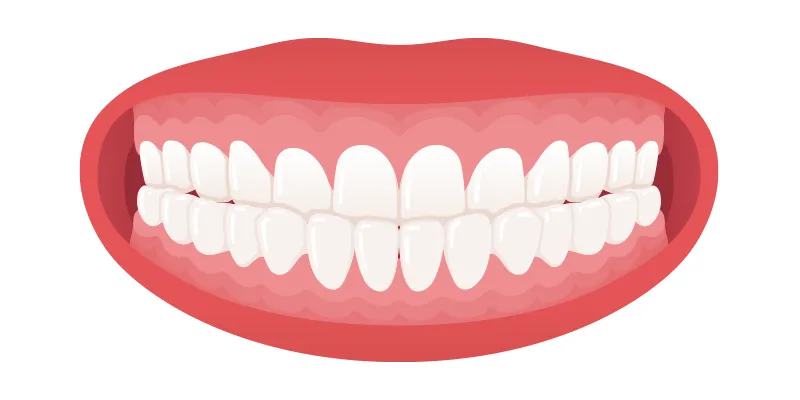
An underbite occurs when the lower jaw extends beyond the upper jaw. It may be caused by a larger lower jaw, a smaller upper jaw, or both.
This condition can lead to:
- Facial imbalance
- Uneven tooth wear
- Difficulty biting or chewing
- Jaw joint discomfort

In an open bite, the front teeth do not touch when the back teeth are closed. Common causes include:
- Prolonged thumb sucking or pacifier use
- Tongue thrusting
An open bite may lead to:
- Speech difficulties, such as lisping
- Improper swallowing patterns
- Aesthetic concerns
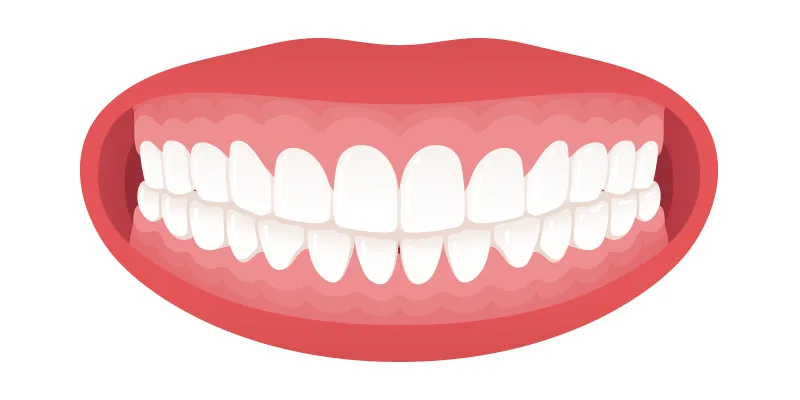
Teeth that stick out noticeably from the mouth are more vulnerable to injury during activities like sports or play. Orthodontic treatment can move these teeth into safer, more aligned positions, enhancing both protection and appearance.

In an open bite, the front teeth do not touch when the back teeth are closed. Common causes include:
- Prolonged thumb sucking or pacifier use
- Tongue thrusting
An open bite may lead to:
- Speech difficulties, such as lisping
- Improper swallowing patterns
- Aesthetic concerns

Teeth that stick out noticeably from the mouth are more vulnerable to injury during activities like sports or play. Orthodontic treatment can move these teeth into safer, more aligned positions, enhancing both protection and appearance.
Orthodontic treatment options at Alma Dental
When most people think of orthodontics, they picture traditional braces. But modern orthodontics offers a wide range of treatment options—suitable for children, teens, and adults alike.
Early intervention orthodontics
Early intervention involves identifying and addressing developing misalignments in young children, often before all the adult teeth have erupted. The goal is to guide proper jaw and dental development and minimise the need for more complex treatment later on.
It can also help support healthy airway development. Narrow or blocked airways may lead to mouth breathing, which dries the mouth and increases the risk of tooth decay and gum disease. Dr Dee focuses on keeping the “nasal plumbing” clear early on to promote proper breathing and facial development.
Signs that may point to the need for early orthodontic evaluation include:
- Night sweats
- Poor-quality sleep
- Difficulty concentrating
- Dry or sore lips
- Chronic nasal congestion
- Crowded baby teeth
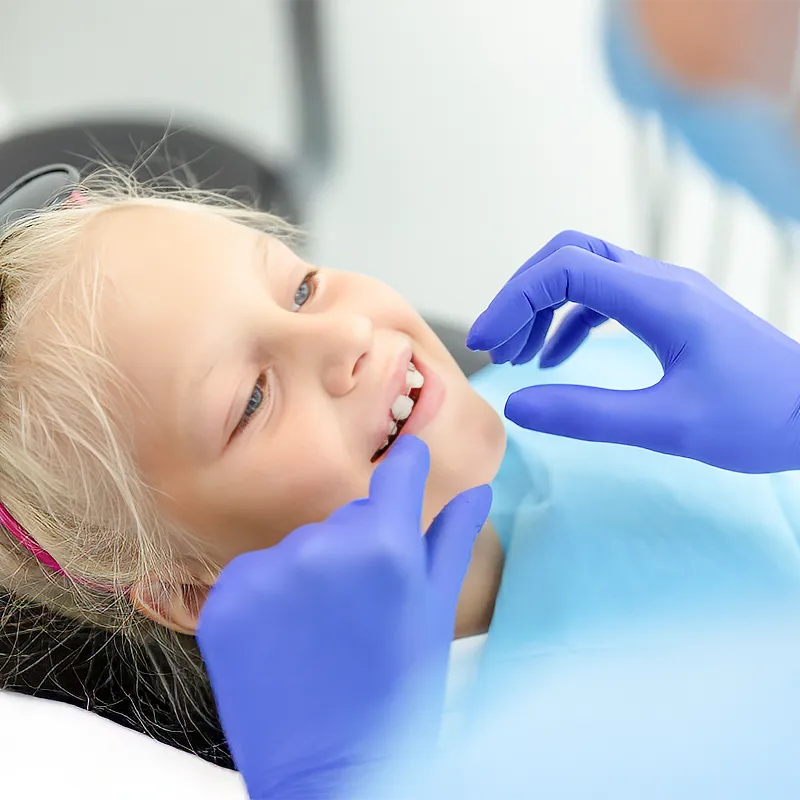
Orthodontic appliances
Orthodontic appliances—commonly called plates—come in many forms, both fixed and removable. Each design serves a specific function, from expanding the jaw to correcting bite issues or creating space for incoming adult teeth. They are often used in younger patients during early intervention treatment.
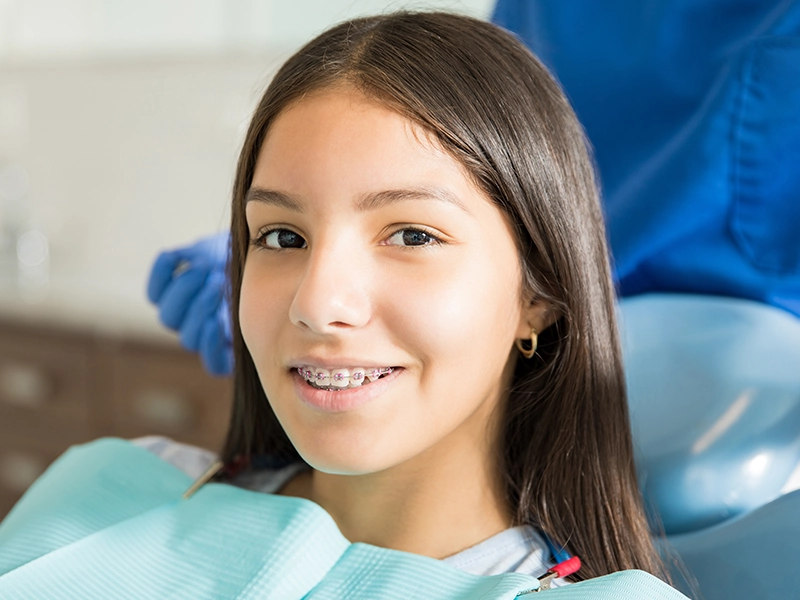
Braces remain a reliable and effective treatment for aligning teeth and correcting bites. They work by applying continuous pressure through a wire attached to brackets on each tooth, gradually moving the teeth into their proper position.
At Alma Dental, we offer several types of braces:
- Traditional metal braces
- Ceramic braces, which blend more naturally with the teeth
- Lingual braces, attached behind the teeth and hidden from view
Clear aligners are a discreet, comfortable alternative to braces. These thin, transparent plastic trays are custom-made to fit snugly over your teeth and gently guide them into better alignment. Aligners are especially popular with older teens and adults who prefer a less noticeable option.
Our approach to orthodontic treatments
At Alma Dental Surgery, we believe that a healthy, well-aligned smile is more than just cosmetic—it supports long-term oral health, comfort, and confidence. That’s why we pay close attention to the development and positioning of the teeth and jaws at every stage of life.
If you’re already a regular patient here, you’ve likely noticed that your dentist checks your bite and alignment during routine exams. These assessments are part of our comprehensive approach to oral care and allow us to detect any signs of malocclusion early.
We’re strong advocates for early orthodontic intervention in children. Timely treatment during growth phases can correct or minimise developing bite issues—sometimes even reducing the need for full braces later. Early action can guide the jaws and teeth into better alignment, improving function and appearance while supporting a child’s overall wellbeing.
Orthodontic care isn’t just for children or teens—adults can also benefit from treatment. We understand that adults often have concerns about appearance, cost, or the duration of treatment. That’s why we offer a range of discreet and flexible options tailored to your lifestyle, priorities, and budget.
Whether you’re exploring early treatment for your child or considering orthodontics for yourself, we’re here to guide you through your options with care, clarity, and professionalism.
- Personalised care and genuine attention
- Clear explanations and all the time you need to ask questions
- High-quality materials and modern equipment
- A passionate, experienced team committed to achieving great outcomes
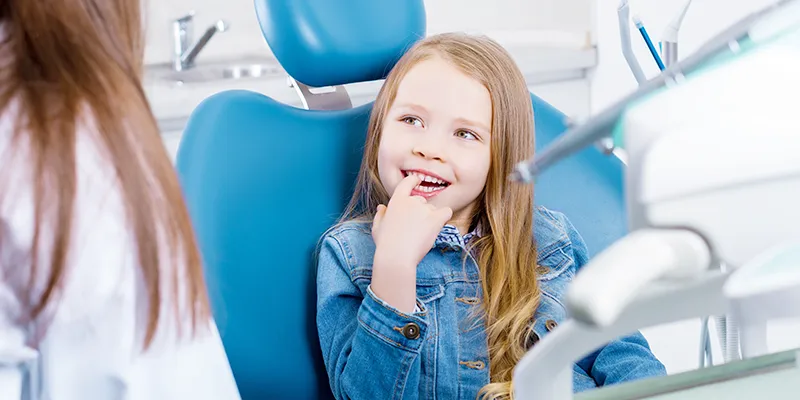
Meet Dr Dee-Anna Luong
Dr Dee-Anna Luong, our principal dentist, is passionate about orthodontic tooth movement. Her formal training began during her Bachelor of Dentistry and has continued through ongoing education and advanced courses in the field. She treats most orthodontic cases in-house and collaborates with a trusted network of specialist orthodontists for complex or surgical cases, ensuring every patient receives the care that’s most appropriate for their needs.
Ideal outcomes of orthodontic treatment
Orthodontic treatment offers more than just a straighter smile—it supports long-term oral health, comfort, and facial harmony. At Alma Dental Surgery, our goal is to achieve outcomes that are both functional and aesthetically pleasing.
Straight teeth have become a hallmark of successful orthodontic care, and for good reason. They’re not only more attractive, but also easier to clean, reducing the risk of tooth decay and gum disease.
Effective orthodontic treatment addresses the alignment of both upper and lower teeth, front and back, for a balanced and lasting result.

A healthy bite means the upper and lower teeth fit together in a way that supports everyday function. This ideal alignment helps:
- Make chewing more efficient
- Enhance speech clarity
- Prevent uneven wear or damage to teeth over time
- Support proper growth of the jaws and, in some cases, even improve breathing by allowing nasal passages and sinuses to develop fully
Sometimes teeth may appear straight, but don’t quite complement the overall shape of the face. Orthodontic treatment takes into account not just the teeth, but how they contribute to facial aesthetics—from the front and in profile—ensuring a natural, confident smile that suits you as a whole.
Are there risks with orthodontic treatment?
Like any medical or dental procedure, orthodontic treatment carries some risks and the potential for unexpected outcomes. At Alma Dental Surgery, we are committed to ensuring you’re fully informed before beginning any treatment. We’ll walk you through all possible risks, so you can make a confident and well-informed decision.
Some of the potential risks include:
- Jaw joint discomfort – In some cases, orthodontic treatment may lead to jaw joint (TMJ) pain or strain.
- Loss of tooth vitality – Teeth with large or deep fillings may be more vulnerable, and the nerves inside these teeth can sometimes die during or after treatment.
- Root shortening (resorption) – The roots of some teeth may become shorter over time, which can increase the risk of tooth mobility or, in rare cases, tooth loss.
- Soft tissue irritation – Broken or loose wires and brackets can occasionally cause irritation or injury to the cheeks, lips, or gums.
Rest assured, our team takes every precaution to minimise these risks. Regular monitoring, careful planning, and open communication help ensure your treatment stays on track and as comfortable as possible.

Love your aligned smile
Whether you’re considering orthodontic treatment for yourself or your child, we’re here to help you achieve a healthier, more confident smile. Book a consultation today and let our caring team guide you through the options that best suit your needs.
